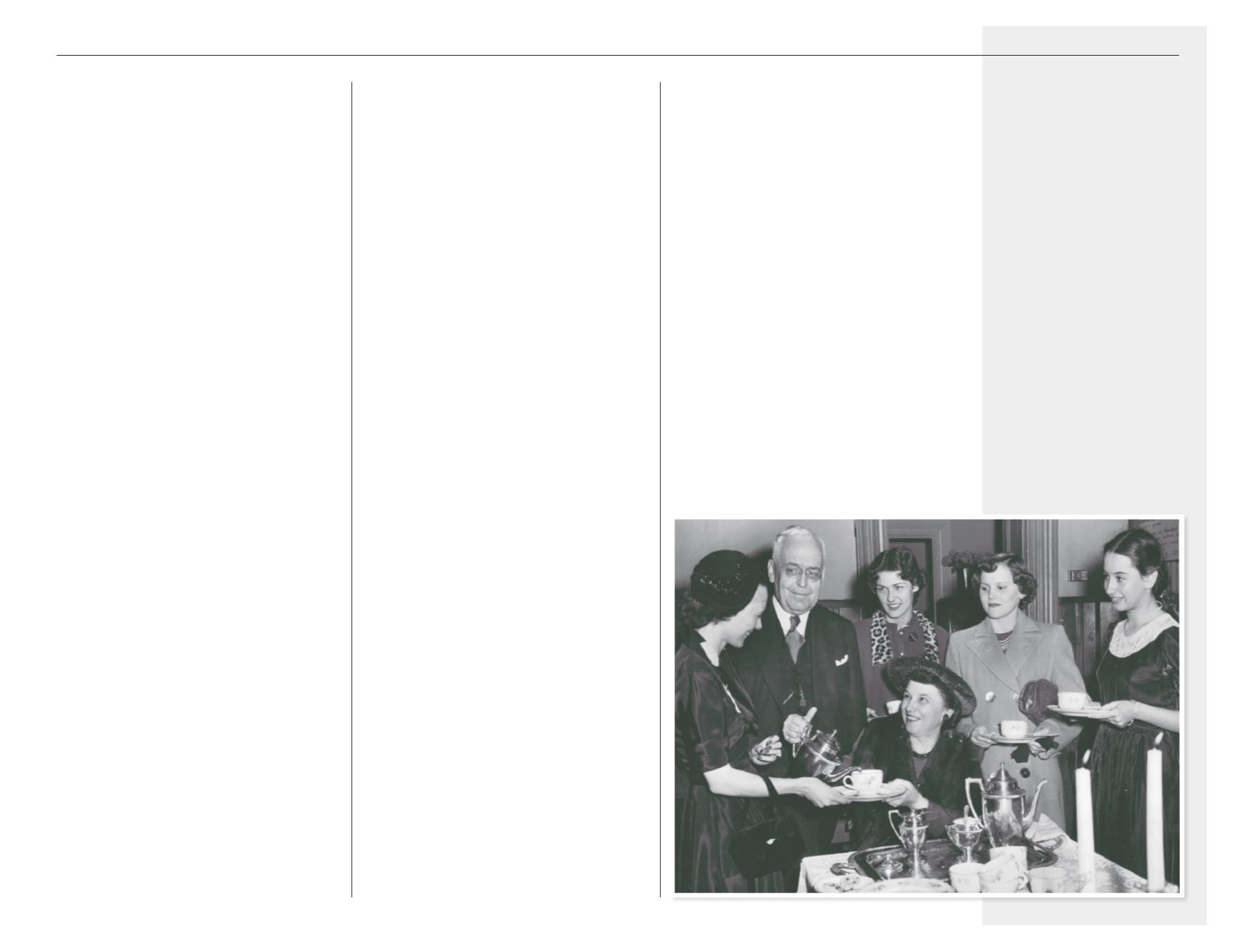

casualties.
Not only is the boy’s moral welfare
looked after, but his physical welfare, too.
He receives a rigid medical examination
every nine months. If anything is wrong, it
is corrected at the clinic free of charge. His
home life is investigated and, if conditions
are bad, effort is made to correct them. The
boys know that their confidences are never
abused, and give them without reserve. Mr.
Robinson says that boys have told him things
that made him want to go off by himself
and cry. But such accidents of environment,
while they may arouse pity, are not allowed
to interfere with the boy’s attempt to better
himself.
“Regardless of the boy’s home
environment and educational status he is not
excused, but it is demanded that he prepare
himself for assimilation with the better
classes.”
The typical Kingdom House boy has done
just that. He is a gentleman without being a
strict grammarian, honest without being a
prig and first, last and all the time, a good
sport. That sums up the object of Kingdom
House activities.
The buildings now housing Kingdom
House have been sold and the organization
is to have a brand-new home. But it is a safe
wager that the new place will never acquire
the atmosphere of the old. Here it was
born; here it suffered growing pains; here
it struggled; and here it reached its present
position. Those unlovely red brick buildings
reek with tradition.
But it is always so. The old must give
place to the new; and regardless of its
surroundings, Kingdom House will go on
with its work. It has the spirit of its labor
wherever it goes.
3
It was time for the old to give way.
Despite the successes on Hickory, the
city’s proposal was too lucrative to
dismiss and the decision was made
to accept the offer and occupy new
quarters. Bishop Ivan Lee Holt recalls in
an address he made in 1953:
…Then as a part of this story too, I would
say, that the time came in the course of the
years when it looked like it was advisable
to leave Eighth and Hickory. That was a
property that had been paid for by money
raised by Dr. Bradley out of St. John’s and
other Methodist Churches, and we happened
to have as the Commissioner of Streets and
Sewers in the city government Mr. Robert
B. Brooks. His father, Mr. L. J. Brooks, was
a member of the Board of Stewards at St.
John’s Church, and a man, who though
quite well along in years, did a little real
estate business. While we were talking about
selling that Kingdom House property the
city decided that it wanted that location
for a playground. Since the city wanted the
location for a playground maybe the city
would buy it. I am satisfied that the city
government in St. Louis gave us for that old
property a much better price than we could
have gotten from anybody else, because they
gave us fifty-six thousand dollars which was,
after all those years of using that property,
practically the same amount of money that
Dr. Bradley had raised from the church
and put into the purchase of the original
building. We had used it for all those years
and finally found ourselves coming out with
practically the same amount of dollars.
4
The decision to relocate had been
debated as early as 1920, despite the fact
that the settlement was well received
and known in the neighborhood. Mrs.
French, president of Women’s Board
announced “that Dr. Holt [then pastor
of St. John’s Methodist Episcopal
Church, South] had come down to talk
to the Board about the appropriation
from the Centenary Fund. Dr. Holt then
explained fully why it was necessary
to move slowly in this matter as there
are changes taking place in our district
which may make it best to change the
location of our plant, as well as some
changes in the directing of the work….”
5
But the minutes from August conflict
with Holt, as “…Mr. Hueselmeyer
[Director of Boy’s Work] gave report
- his work has lead [sic] him to decide
that this neighborhood is a good place
for our work…” and indicated that
the settlement will stay at its present
location indefinitely.
6
This sentiment
was again echoed in the Women’s Board
minutes of November 1920.
Nevertheless, the debate settled on
relocation. Armed with money from the
sale, assistance from the Community
Fund and support from the Centenary
27
C
hapter
T
wo
:
‘F
orgetting
O
ne
’
s
S
elf
in
S
ervice
to
H
umanity
’ (1928 – 1955)
P
hoto
:
B:
Bishop and
Mrs. Ivan Lee Holt
B
T
he
decision
to
relocate had
been
debated
as
early
as
1920 …















